LED uses fall into four major categories:
- Visual signals where light goes more or less directly from the source to the human eye, to convey a message or meaning
- Illumination where light is reflected from objects to give visual response of these objects
- Measuring and interacting with processes involving no human vision
- Narrow band light sensors where LEDs operate in a reverse-bias mode and respond to incident light, instead of emitting light
Indicators and signs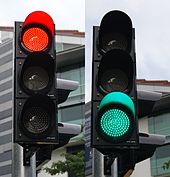
The low energy consumption, low maintenance and small size of LEDs has led to uses as status indicators and displays on a variety of equipment and installations. Large-area LED displays are used as stadium displays, dynamic decorative displays, and dynamic message signs on freeways. Thin, lightweight message displays are used at airports and railway stations, and as destination displays for trains, buses, trams, and ferries.
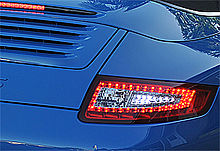 One-color light is well suited for traffic lights and signals, exit signs, emergency vehicle lighting, ships’ navigation lights or lanterns (chromacity and luminance standards being set under the Convention on the International Regulations for Preventing Collisions at Sea 1972, Annex I and the CIE) and LED-based Christmas lights. In cold climates, LED traffic lights may remain snow-covered. Red or yellow LEDs are used in indicator and alphanumeric displays in environments where night vision must be retained: aircraft cockpits, submarine and ship bridges, astronomy observatories, and in the field, e.g. night time animal watching and military field use.
One-color light is well suited for traffic lights and signals, exit signs, emergency vehicle lighting, ships’ navigation lights or lanterns (chromacity and luminance standards being set under the Convention on the International Regulations for Preventing Collisions at Sea 1972, Annex I and the CIE) and LED-based Christmas lights. In cold climates, LED traffic lights may remain snow-covered. Red or yellow LEDs are used in indicator and alphanumeric displays in environments where night vision must be retained: aircraft cockpits, submarine and ship bridges, astronomy observatories, and in the field, e.g. night time animal watching and military field use.
Because of their long life, fast switching times, and visibility in broad daylight due to their high output and focus, LEDs have been used in brake lights for cars’ high-mounted brake lights, trucks, and buses, and in turn signals for some time. However, many vehicles now use LEDs for their rear light clusters. The use in brakes improves safety, due to a great reduction in the time needed to light fully, or faster rise time, up to 0.5 second faster than an incandescent bulb. This gives drivers behind more time to react. In a dual intensity circuit (rear markers and brakes) if the LEDs are not pulsed at a fast enough frequency, they can create a phantom array, where ghost images of the LED appear if the eyes quickly scan across the array. White LED headlamps are beginning to appear. Using LEDs has styling advantages because LEDs can form much thinner lights than incandescent lamps with parabolic reflectors.
Due to the relative cheapness of low output LEDs, they are also used in many temporary uses such as glowsticks, throwies, and the photonic textile Lumalive. Artists have also used LEDs for LED art.
Weather and all-hazards radio receivers with Specific Area Message Encoding (SAME) have three LEDs: red for warnings, orange for watches, and yellow for advisories and statements whenever issued.
Lighting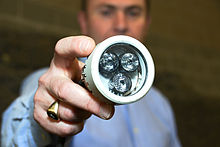
With the development of high-efficiency and high-power LEDs, it has become possible to use LEDs in lighting and illumination. To encourage the shift to LED lamps and other high-efficiency lighting, the US Department of Energy has created the L Prize competition. The Philips Lighting North America LED bulb won the first competition on August 3, 2011, after successfully completing 18 months of intensive field, lab, and product testing.
LEDs are used as street lights and in other architectural lighting. The mechanical robustness and long lifetime are used in automotive lighting on cars, motorcycles, and bicycle lights. LED light emission may be efficiently controlled by using nonimaging optics principles.
LED street lights are employed on poles and in parking garages. In 2007, the Italian village of Torraca was the first place to convert its entire illumination system to LEDs.
LEDs are used in aviation lighting. Airbus has used LED lighting in its Airbus A320 Enhanced since 2007, and Boeing uses LED lighting in the 787 and 737 Sky Interior. LEDs are also being used now in airport and heliport lighting. LED airport fixtures currently include medium-intensity runway lights, runway centerline lights, taxiway centerline and edge lights, guidance signs, and obstruction lighting.
LEDs are also used as a light source for DLP projectors, and to backlight LCD televisions (referred to as LED TVs) and laptop displays. RGB LEDs raise the color gamut by as much as 45%. Screens for TV and computer displays can be made thinner using LEDs for backlighting.
The lack of IR or heat radiation makes LEDs ideal for stage lights using banks of RGB LEDs that can easily change color and decrease heating from traditional stage lighting, as well as medical lighting where IR-radiation can be harmful. In energy conservation, the lower heat output of LEDs also means air conditioning (cooling) systems have less heat in need of disposal.
LEDs are small, durable and need little power, so they are used in handheld devices such as flashlights. LED strobe lights or camera flashes operate at a safe, low voltage, instead of the 250+ volts commonly found in xenon flashlamp-based lighting. This is especially useful in cameras on mobile phones, where space is at a premium and bulky voltage-raising circuitry is undesirable.
LEDs are used for infrared illumination in night vision uses including security cameras. A ring of LEDs around a video camera, aimed forward into a retroreflective background, allows chroma keying in video productions.
LEDs are used in mining operations, as cap lamps to provide light for miners. Research has been done to improve LEDs for mining, to reduce glare and to increase illumination, reducing risk of injury to the miners.
LEDs are now used commonly in all market areas from commercial to home use: standard lighting, AV, stage, theatrical, architectural, and public installations, and wherever artificial light is used.
LEDs are increasingly finding uses in medical and educational applications, for example as mood enhancement, and new technologies such as AmBX, exploiting LED versatility. NASA has even sponsored research for the use of LEDs to promote health for astronauts.
Data communication and other signalling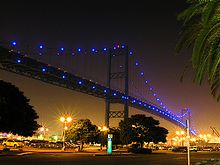
Light can be used to transmit data and analog signals. For example, lighting white LEDs can be used in systems assisting people to navigate in closed spaces while searching necessary rooms or objects.
Assistive listening devices in many theaters and similar spaces use arrays of infrared LEDs to send sound to listeners’ receivers. Light-emitting diodes (as well as semiconductor lasers) are used to send data over many types of fiber optic cable, from digital audio over TOSLINK cables to the very high bandwidth fiber links that form the Internet backbone. For some time, computers were commonly equipped with IrDA interfaces, which allowed them to send and receive data to nearby machines via infrared.
Because LEDs can cycle on and off millions of times per second, very high data bandwidth can be achieved.
Sustainable lighting
Efficient lighting is needed for sustainable architecture. In 2009, US Department of Energy testing results on LED lamps showed an average efficacy of 35 lm/W, below that of typical CFLs, and as low as 9 lm/W, worse than standard incandescent bulbs. A typical 13-watt LED lamp emitted 450 to 650 lumens, which is equivalent to a standard 40-watt incandescent bulb.
However, as of 2011, there are LED bulbs available as efficient as 150 lm/W and even inexpensive low-end models typically exceed 50 lm/W, so that a 6-watt LED could achieve the same results as a standard 40-watt incandescent bulb. The latter has an expected lifespan of 1,000 hours, whereas an LED can continue to operate with reduced efficiency for more than 50,000 hours.
Energy consumption
In the US, one kilowatt-hour (3.6 MJ) of electricity currently causes an average 1.34 pounds (610 g) of CO
2 emission. Assuming the average light bulb is on for 10 hours a day, a 40-watt bulb causes 196 pounds (89 kg) of CO
2 emission per year. The 6-watt LED equivalent only causes 30 pounds (14 kg) of CO
2 over the same time span. A building’s carbon footprint from lighting can, therefore, be reduced by 85% by exchanging all incandescent bulbs for new LEDs—if a building previously used only incandescent bulbs.
In practice, most buildings that use a lot of lighting use fluorescent lighting, which has 22% luminous efficiency compared with 5% for filaments, so changing to LED lighting would still give a 34% reduction in electrical power use and carbon emissions.
The reduction in carbon emissions depends on the source of electricity. Nuclear power in the United States produced 19.2% of electricity in 2011, so reducing electricity consumption in the U.S. reduces carbon emissions more than in France (75% nuclear electricity) or Norway (almost entirely hydroelectric).
Replacing lights that spend the most time lit results in the most savings, so LED lights in infrequently used locations bring a smaller return on investment.
LED as a light source for machine vision systems 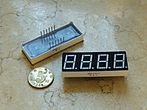
Machine vision systems, also known as Computer vision systems, often require bright and homogeneous illumination, so features of interest are easier to process. LEDs are often used to achieve this type of purpose, and this is likely to remain one of their major uses until their price drops low enough to make signaling and illumination uses more economically feasible.
Barcode scanners are the most common example of machine vision applications, and many of those scanners use low-cost products red LEDs instead of laser-based LEDs. Optical computer mice are an example of LEDs in machine vision, as it is used to provide an even light source on the surface for the miniature camera within the mouse. LEDs constitute a nearly ideal light source for machine vision systems for several reasons:
The size of the illuminated field is usually comparatively small and machine vision systems are often quite expensive, so the cost of the light source is usually a minor concern. However, it might not be easy to replace a broken light source placed within complex machinery, and here the long service life of LEDs is a benefit.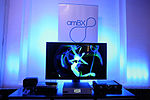
LED elements tend to be small and can be placed with high density over flat or even-shaped substrates (PCBs etc.) so that bright and homogeneous sources that direct light from tightly controlled directions on inspected parts can be designed.
LED lights can often be obtained with small, low-cost lenses and diffusers that help achieve high light densities with control over lighting levels and homogeneity.
LED sources can also be shaped in several configurations (spot lights; ring lights; backlights; or linear assemblies … etc).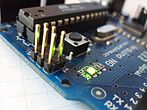
LEDs can be easily strobed (in the microsecond range and below) and synchronized with imaging. High-power LEDs are available allowing well-lit images even with very short light pulses. This is often used to obtain crisp and sharp still images of quickly moving parts.
LEDs come in several different colors and wavelengths, allowing easy use of the best color for each need, where different color may provide better visibility of features of interest. Having a precisely known spectrum lets tightly matched filters be used to separate informative bandwidth or to reduce disturbing effects of ambient light. LEDs usually operate at comparatively low working temperatures, simplifying heat management, and dissipation. This allows using plastic lenses, filters, and diffusers. Waterproof units can also easily be designed, allowing use in harsh or wet environments (food, beverage, or oil industry).
Other applications
The light from LEDs can be modulated very quickly so they are used extensively in optical fiber and free space optics communications. This includes remote controls, such as for TVs, VCRs, and LED Computers, where infrared LEDs are often used. Opto-isolators use an LED combined with a photodiode or phototransistor to provide a signal path with electrical isolation between two circuits. This is especially useful in medical equipment where the signals from a low-voltage sensor circuit (usually battery-powered) in contact with a living organism must be electrically isolated from any possible electrical failure in a recording or monitoring device operating at potentially dangerous voltages. An optoisolator also lets information be transferred between circuits that don’t share a common ground potential.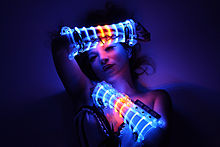
Many sensor systems rely on light as the signal source. LEDs are often ideal as a light source due to the requirements of the sensors. LEDs are used as motion sensors, for example in optical computer mice. The Nintendo Wii’s sensor bar uses infrared LEDs. Pulse oximeters use them for measuring oxygen saturation. Some flatbed scanners use arrays of RGB LEDs rather than the typical cold-cathode fluorescent lamp as the light source. Having independent control of three illuminated colors allows the scanner to calibrate itself for more accurate color balance, and there is no need for warm-up. Further, its sensors only need be monochromatic, since at any one time the page being scanned is only lit by one color of light. Since LEDs can also be used as photodiodes, they can be used for both photo emission and detection. This could be used, for example, in a touchscreen that registers reflected light from a finger or stylus. Many materials and biological systems are sensitive to, or dependent on, light. Grow lights use LEDs to increase photosynthesis in plants, and bacteria and viruses can be removed from water and other substances using UV LEDs for sterilization.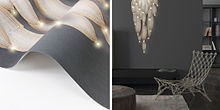
LEDs have also been used as a medium-quality voltage reference in electronic circuits. The forward voltage drop (e.g. about 1.7 V for a normal red LED) can be used instead of a Zener diode in low-voltage regulators. Red LEDs have the flattest I/V curve above the knee. Nitride-based LEDs have a fairly steep I/V curve and are useless for this purpose. Although LED forward voltage is far more current-dependent than a Zener diode, Zener diodes with breakdown voltages below 3 V are not widely available.
The progressive miniaturization of low-voltage lighting technology, such as LEDs and OLEDs, suitable to incorporate into low-thickness materials has fostered experimentation in combining light sources and wall covering surfaces for interior walls. The new possibilities offered by these developments have prompted some designers and companies, such as Meystyle, Ingo Maurer, Lomox and Samsung, to research and develop proprietary LED wallpaper technologies, some of which are currently available for commercial purchase. Other solutions mainly exist as prototypes or are in the process of being further refined.
Quote from Wikipedia.
Link: https://en.wikipedia.org/wiki/Light-emitting_diode
